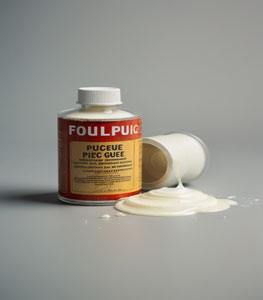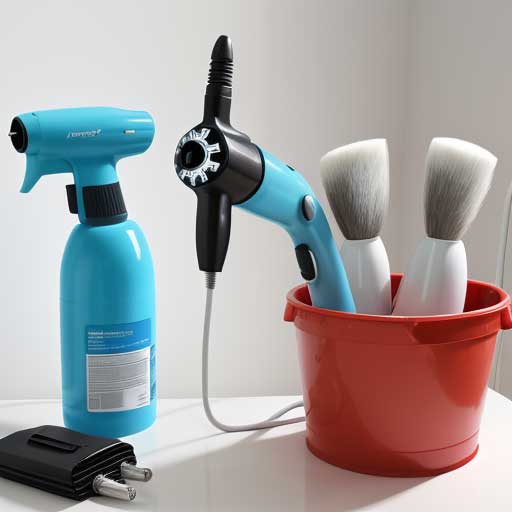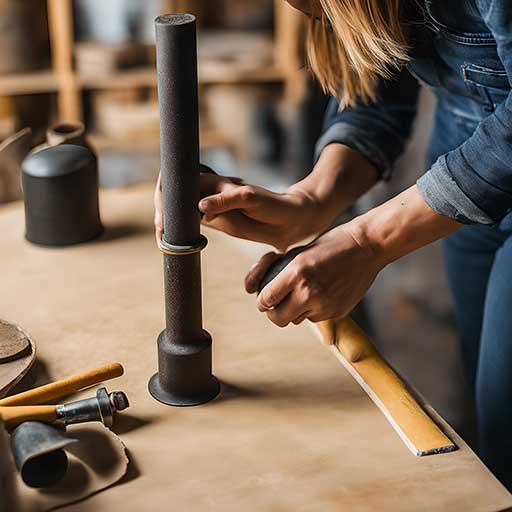
How To Soften Gorilla Glue?
To soften gorilla glue, apply isopropyl alcohol or acetone to the hardened glue. Isopropyl alcohol is commonly used and is readily available at most drugstores or online suppliers.
Gorilla glue is an industrial-strength adhesive that is widely used in the industrial manufacturing and construction industries. While it is known for its strength and durability, it can sometimes be a challenge to work with. Fortunately, there are ways to soften and remove cured gorilla glue, and one of the most effective methods is using isopropyl alcohol.
This common solvent can be found in most drugstores or purchased online. Another option is acetone, which can be found in nail polish remover. Both of these substances aid in breaking down the hardened glue, making it easier to remove. In this article, we’ll explore how to soften gorilla glue and what steps to follow for effective removal.
Understanding Gorilla Glue

What Is Gorilla Glue?
Gorilla glue is an incredibly strong adhesive that can bond almost anything together. It is popular among carpenters and diy enthusiasts due to its versatile and waterproof properties. It is made up of a polyurethane base and reacts with the moisture present in the atmosphere to harden and create a strong bond.
This glue can expand up to three to four times its original size and is renowned for its durability.
- Gorilla glue is multipurpose and can be used on a wide range of materials such as wood, plastic, metal, ceramic and more.
- It is water-resistant and can hold even in extreme temperatures.
- It dries clear, ensuring that the bonds are hardly visible.
Why Does It Harden And Become Difficult To Remove?
As mentioned, gorilla glue reacts with the moisture present in the atmosphere to harden. This reaction causes the glue to expand, which creates a very strong bond with the surfaces it is applied to. It is this very property that makes the glue hardened and challenging to remove.
- Once gorilla glue hardens, it becomes tough to remove because of its strong bond with the surface.
- The glue is moisture-activated, which means that it can react with any humidity present in the air, even after the initial application. This can lead to it expanding and making the bond even stronger.
- Additionally, since the glue is waterproof, any attempts to remove it using water can not only be ineffective but can actually make it worse.
Gorilla glue is an incredibly strong adhesive that can create an indestructible bond. While it can be challenging to remove, understanding how it reacts and bonds can help individuals use it more effectively.
Materials You’ll Need

Gorilla glue is renowned for its strength and durability. However, it can be challenging to remove or soften once it hardens. Fortunately, there are several ways you can soften gorilla glue with a few materials that you might already have in your home or workshop.
Before beginning this task, it’s essential to take the necessary precautions to protect yourself, such as wearing protective gear, using softening agents, and having scrapers and sandpaper on hand to make the process smoother. This article will explain each of these materials in detail using the following headings:
Protective Gear
Before you begin, make sure to wear the appropriate protective gear to avoid skin and eye irritation and respiratory problems. Below is a list of protective gear you’ll need:
- Gloves: Wear gloves to protect your hands from the chemical reaction while handling gorilla glue.
- Safety glasses: Use safety glasses or goggles to protect your eyes when working with any chemicals or materials.
- Respirator: If you’re working with a significant amount of gorilla glue, you may need a respirator to avoid inhaling fumes.
Softening Agents

Now that you have your protective gear, let’s discuss how to soften gorilla glue. There are several softening agents you can use.
- Acetone: Acetone is a potent solvent that can dissolve gorilla glue. You may have acetone in your home already as it’s commonly used as nail polish remover. Use a small amount of acetone and apply it directly to the affected area, then let it soak in for 10-15 minutes. Use a scraper or sandpaper to remove the softened glue.
- Vinegar: White vinegar can be a natural and affordable option to soften gorilla glue. Soak a cloth or rag in vinegar and apply it to the affected area for 10-15 minutes. Use a scraper or sandpaper to remove the softened glue.
- Heat: Applying heat can also help to soften gorilla glue. Use a hair dryer or heat gun to apply heat directly to the affected area. However, be careful not to overheat the area as it may cause damage to the materials.
Scrapers And Sandpaper

Lastly, it’s essential to have the right tools on hand to make the process smoother. Here are the tools you’ll need:
- Plastic scraper: You can use a plastic scraper to avoid scratching or damaging the surface while removing the softened gorilla glue.
- Sandpaper: Sandpaper can be used to remove any remaining hardened glue. Use a fine-grit sandpaper to avoid damaging the surface.
By following these steps on how to soften gorilla glue, you can remove it from various surfaces safely and effectively. Notably, be sure to have a well-ventilated area as some of the materials used for softening are potent chemicals. Remember to wear protective gear, use softening agents such as acetone or vinegar, and keep scrapers and sandpaper on hand to make the process more manageable.
Softening Gorilla Glue Quickly And Effortlessly
If you’ve ever worked with gorilla glue before, you know that it’s one of the strongest adhesives available. However, there may come a time when you need to remove or soften gorilla glue from a surface. While it may seem like a daunting task, there are ways to do it quickly and effortlessly.
In this section, we’ll discuss three methods: using heat, solvents, and mechanical methods to soften gorilla glue.
Using Heat To Soften Gorilla Glue:
One of the easiest ways to soften gorilla glue is to use heat. Here are the key steps to follow:
- Warm up the area: If you’re trying to soften gorilla glue on a surface, you’ll need to warm up the area first. You can do this by placing a damp cloth over the glue and then using a hair dryer to apply heat.
- Soften the glue: Once the area is warm, use a scraper or razor blade to gently scrape away the softened glue. Be sure to be gentle so as to avoid damaging the surface beneath.
- Wipe away the residue: After you’ve removed as much gorilla glue as possible, wipe away any residue with a cloth dampened with acetone or rubbing alcohol.
Using Solvents To Soften Gorilla Glue:
Another effective way to soften gorilla glue is by using solvents. Here’s what you need to do:
- Choose the solvent: There are several solvents that will work to soften gorilla glue, including acetone, denatured alcohol, and paint thinner.
- Apply the solvent: Apply the solvent to the glue and wait for it to soften. This typically takes anywhere from 10 to 20 minutes.
- Scrape off the glue: Once the glue is soft, use a scraper or razor blade to carefully scrape it away.
- Clean the area: Once you’ve removed as much gorilla glue as possible, clean the area with soap and water to remove any leftover residue.
Using Mechanical Methods To Soften Gorilla Glue:

If the above methods fail, you can try using mechanical methods to soften gorilla glue. Here are the steps:
- Sand the glue: Using sandpaper or a sanding block, sand the gorilla glue until it’s as thin as possible.
- Soak in water: Soak the area in warm water for several hours. This will help to soften the glue even further.
- Scrape away the glue: Use a scraper or razor blade to gently scrape away the softened glue.
- Clean the area: Wipe down the area with a cloth dampened with rubbing alcohol to remove any leftover residue.
While gorilla glue is one of the strongest adhesives on the market, it’s not impossible to soften and remove. By using heat, solvents, or mechanical methods, you can get rid of gorilla glue quickly and effortlessly.
Removing Gorilla Glue Residue
Gorilla glue is an excellent adhesive for a wide range of projects, but dealing with its residue can be a mess. If you’re wondering how to soften gorilla glue and remove the residue, this post is for you. In this section, we’ll discuss how to ensure all glue residue is removed and tips for preventing gorilla glue from hardening in unwanted areas.
How To Ensure All Glue Residue Is Removed
Removing gorilla glue residue may take some effort, but here are some tips to make the task easier:
- Before you begin, wear gloves and goggles. Gorilla glue can bond to skin and damage eyes. Plus, it’s easier to work with when you don’t have to worry about getting it on your skin.
- If the glue is still wet, use a damp cloth to wipe it away. Be sure to use a gentle pressure, so you don’t spread the glue.
- If the glue has dried, gently scrape off as much as possible with a plastic scraper or credit card.
- Soak a cloth in acetone or rubbing alcohol, then place it over the glue residue. Let it sit for 15-20 minutes. The glue will begin to soften and become easier to remove.
- After removing the glue residue, clean the surface with soap and water to remove any remaining chemical residue.
Tips For Preventing Gorilla Glue From Hardening In Unwanted Areas
Prevention is always better than a cure. Here are some tips for preventing gorilla glue from hardening in unwanted areas:
- Use masking tape or painter’s tape to cover areas that you don’t want the glue to get on.
- Remember to work in a well-ventilated area. Gorilla glue has a strong odor that can be harmful when inhaled.
- Use only the recommended amount of glue for your project. Over-application can lead to the excess glue spreading and adhering to unwanted areas.
- Keep the lid tightly sealed on the glue bottle when not in use to prevent drying and hardening.
Removing gorilla glue residue can be a challenge, but with a few simple steps, you can get the job done. And if you take the proper prevention measures, you won’t have to deal with it in the first place.
Frequently Asked Questions For How To Soften Gorilla Glue
How Do I Soften Gorilla Glue To Remove It From Surfaces?
There are a few methods to easily soften gorilla glue. You can try using a heat gun or hair dryer to warm up the hardened glue and soften it. Another option is to use acetone or rubbing alcohol to dissolve the glue.
If the surface the glue is on is heat-sensitive, you can use a plastic scraper to gently remove the glue.
Can I Use Water To Soften Gorilla Glue?
No, water is not effective in softening gorilla glue. In fact, gorilla glue is waterproof and will not dissolve with water. Using water on cured gorilla glue would be ineffective and may damage the surface it is stuck to.
Can I Use Sandpaper To Remove Gorilla Glue From A Surface?
Yes, you can use sandpaper to remove gorilla glue from a surface, but it may be difficult. First, try another method to soften the glue. If that doesn’t work, use fine-grit sandpaper and gently sand the glue away. Be careful not to scratch the surface or remove any finish.
Can I Reuse Hardened Gorilla Glue?
No, hardened gorilla glue cannot be reused. Once the glue has cured, it cannot be softened or reactivated to bond again. If you have leftover glue, store it in a cool, dry place with the cap tightly closed.
How Can I Prevent Gorilla Glue From Hardening In The Bottle?
To prevent gorilla glue from hardening in the bottle, always store it in a cool, dry place with the cap tightly closed. It is recommended to store the bottle upside down to keep the glue from clogging the tip. You can also try storing the glue in a resealable plastic bag to keep it from drying out.
Conclusion
Having gorilla glue stuck to your fingers or any surface can be frustrating and challenging to handle. However, you now know how to soften gorilla glue by using simple household items such as oil, acetone, or heat, which can easily dissolve the glue making it easy to clean up.
Before softening gorilla glue, it is essential to prioritize your safety by wearing gloves and working in a well-ventilated area. You should also avoid breathing in the fumes from solvents such as acetone. Using the guidelines discussed in this article, you can quickly soften gorilla glue and get back to your project without any hassles.
Remember, always be cautious when handling gorilla glue or any other adhesive, so you do not end up hurting yourself or damaging your surfaces.
